Description
Introduction
Food culture around the world is full of fascinating surprises, and one of the more unusual yet captivating dishes that has been gaining attention is Frozen Cow Lap. The name alone sparks curiosity. What exactly is it? Where did it come from? And why are people searching for it online?
This guide will take you deep into the world of Frozen Cow Lap—its origins, preparation, cultural significance, health considerations, and even how it can fit into modern diets. Whether you’re a curious foodie, a culinary explorer, or simply someone researching exotic foods, this article will give you everything you need to know.
What Is Frozen Cow Lap?
At its core, Frozen Cow Lap refers to a preserved cut of beef derived from the muscular regions of a cow’s body. The term “lap” in some local dialects traditionally refers to the thigh or flank region of cattle. When frozen, this cut maintains its structure and flavor for extended storage and is often used in soups, stews, barbecues, and street-food recipes.
While the dish might sound strange at first, it’s essentially a regional way of preparing and marketing frozen beef cuts. Over time, however, Frozen Cow Lap has taken on cultural and culinary identity, becoming a specialty in certain communities where preservation and flavor are key.
Origins and Cultural Background
The roots of Frozen Cow Lap can be traced to African and Asian communities where resourcefulness in meat preservation was crucial. Freezing, smoking, and salting were ways to make meat last in hot climates.
-
West Africa: In countries like Nigeria and Ghana, beef is central to daily meals. The cow lap cut is often prized for its texture in pepper soups, stews, and grilled dishes.
-
Asia: Certain regions in South and Southeast Asia also use frozen cuts of beef to enhance curries and stir-fries, with lap meat offering a chewy bite that holds up well to spices.
-
Global diaspora: As migration spread culinary traditions, Frozen Cow Lap started appearing in international markets and online food discussions.
The cultural appeal lies not only in the taste but also in its role as a communal dish. Many families gather around soups or grills featuring this cut of meat, making it a symbol of togetherness.
How Frozen Cow Lap Is Prepared
1. Freezing Process
Fresh cow lap is cleaned, cut into manageable portions, and stored in deep freezers to preserve it. Freezing locks in flavor and prevents spoilage, making it ideal for long-distance transport and storage.
2. Cooking Techniques
Frozen Cow Lap can be prepared in multiple ways depending on culinary traditions:
-
Boiled: Simmered with spices and vegetables for soups.
-
Grilled or roasted: Marinated and cooked over open flames, often producing smoky flavors.
-
Stewed: Slow-cooked in tomato or pepper bases, absorbing rich seasoning.
-
Fried: Thinly sliced and fried for a crunchy yet tender snack.
3. Flavor Profile
The lap cut is typically lean but firm, giving it a slightly chewy texture. When cooked properly, it absorbs spices beautifully, making it versatile in spicy, tangy, or smoky dishes.
Popular Dishes Made with Frozen Cow Lap
-
Pepper Soup: A fiery West African delicacy where Frozen Cow Lap is simmered with pepper, ginger, garlic, and herbs.
-
Grilled Lap Skewers: Thin slices marinated with chili, onion, and local spices, grilled over charcoal.
-
Cow Lap Stew: Tomato-based stew served with rice, yam, or plantain.
-
Street-Food Snacks: In some regions, lap meat is cut into bite-sized chunks, fried, and sold with dipping sauces.
-
Curries: In Asian cuisines, lap meat is often slow-cooked in coconut-milk or yogurt-based curries.
These dishes showcase the adaptability in both traditional and modern kitchens.
Nutritional Value of Frozen Cow Lap
Like most beef cuts, cow lap is rich in proteins, vitamins, and minerals. Below are some of the nutritional highlights:
-
Protein: Essential for muscle repair and growth.
-
Iron: Important for red blood cell production and preventing anemia.
-
Zinc: Boosts immunity and supports healing.
-
Vitamin B12: Crucial for nerve health and metabolism.
-
Collagen & Connective Tissue: Beneficial for joint health.
Health Considerations
While is nutritious, moderation is important:
-
Cholesterol: Being red meat, it contains saturated fats, so portion control is advised.
-
Preservation Quality: Always ensure that frozen cuts are sourced from reliable vendors to avoid contamination.
-
Cooking Thoroughness: Undercooked beef can carry risks of bacteria or parasites.
Frozen Cow Lap in Modern Diets
1. High-Protein Diets
For fitness enthusiasts, offers lean protein that can be incorporated into meal preps. Grilled or boiled versions are especially popular among athletes.
2. Cultural Fusion Recipes
Chefs are experimenting by combining with Western and Asian techniques—think tacos filled with lap stew, or beef lap ramen bowls.
3. Convenience Cooking
Freezing allows busy households to stock up without daily market visits. can be pulled out and quickly transformed into dinner.
Frozen Cow Lap vs. Other Beef Cuts
| Feature | Frozen Cow Lap | Ribeye / Sirloin | Shank / Brisket |
|---|---|---|---|
| Texture | Firm, slightly chewy | Tender, juicy | Tough, needs slow cook |
| Flavor Absorption | Excellent with spices | Naturally flavorful | Rich, beefy |
| Cooking Methods | Boil, grill, stew, fry | Grill, pan-sear | Braise, stew |
| Cost | More affordable | Expensive | Moderate |
This comparison shows why is both practical and flavorful, especially for traditional dishes requiring spice infusion.
Buying Frozen Cow Lap: What to Look For
When purchasing , consider the following:
-
Source: Choose reputable butchers or stores.
-
Packaging: Vacuum-sealed packaging preserves freshness better.
-
Color: Meat should retain a natural red hue even when frozen.
-
Storage: Ensure it has been kept consistently frozen to avoid bacterial growth.
How to Store Frozen Cow Lap at Home
-
Freezer Temperature: Keep at −18°C (0°F) or lower.
-
Avoid Refreezing: Once thawed, do not refreeze to prevent texture loss.
-
Use Airtight Bags: Prevents freezer burn.
-
Label and Date: Track storage duration (best used within 3–6 months).
Frozen Cow Lap and Food Safety
Because is raw meat, proper handling is critical:
-
Wash hands and utensils before and after handling.
-
Use separate cutting boards for meat and vegetables.
-
Cook thoroughly to kill bacteria like E. coli or Salmonella.
Environmental and Ethical Considerations
The meat industry is often under scrutiny for its impact on the environment. When choosing consider:
-
Sustainable Farming: Support suppliers who practice ethical cattle rearing.
-
Local Sourcing: Reduces carbon footprint compared to imported frozen meats.
-
Balanced Diets: Incorporating plant-based proteins alongside beef can reduce overreliance on livestock.
Frozen Cow Lap in Pop Culture
Interestingly, the unique name has sparked curiosity on social media. Food bloggers and YouTubers create content around trying exotic cuts of meat, and the dish often goes viral for its quirky title. Some even use it as a metaphor for unexpected cultural blends—something ordinary but made extraordinary through tradition.
Tips for Cooking Frozen Cow Lap at Home
-
Thaw Properly: Thaw in the fridge overnight, not at room temperature.
-
Tenderize: Marinate with acidic ingredients (like lemon juice or vinegar) to soften the fibers.
-
Season Generously: Bold spices like chili, cumin, garlic, and ginger pair well.
-
Slow Cooking: Low and slow methods bring out tenderness.
-
Pairing: Goes well with rice, yam, cassava, noodles, or bread.
Frozen Cow Lap Recipes
Recipe 1
Ingredients: , onions, garlic, ginger, chili, African spices, broth.
Method: Simmer thawed lap in broth with spices until tender. Serve hot with yam or rice.
Recipe 2: Grilled Cow Lap Skewers
Ingredients: Thinly sliced marinade (soy sauce, chili, garlic).
Method: Skewer and grill over medium heat, basting occasionally. Serve with dipping sauce.
Recipe 3: Cow Lap Curry
Ingredients: , coconut milk, curry spices, onions, tomatoes.
Method: Fry onions and spices, add meat, simmer in coconut milk until soft. Serve with rice.
FAQs About Frozen Cow Lap
1. Is Frozen Cow Lap the same as regular beef?
Yes, but specifically from the lap (thigh/flank) area, preserved by freezing.
2. How long can it last in the freezer?
Ideally 3–6 months with proper storage.
Absolutely. It works well in stews, barbecues, and even fusion dishes like tacos.
4. Is it affordable?
Generally cheaper than premium cuts like ribeye or sirloin, making it budget-friendly.
Conclusion
Frozen Cow Lap is more than just an unusual name—it’s a window into cultural traditions, resourceful cooking, and delicious meals. From its roots in African and Asian cuisines to its place in modern kitchens worldwide, this frozen beef cut shows how simple preservation methods can create versatile culinary experiences.

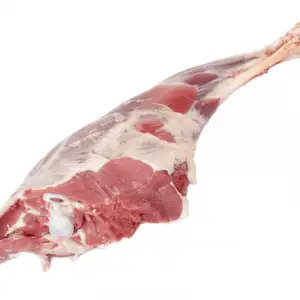
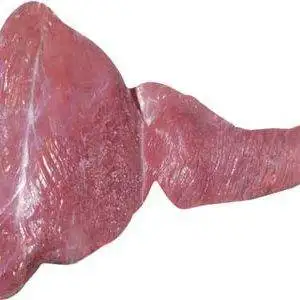
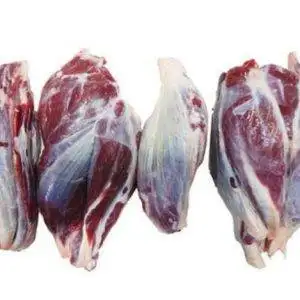
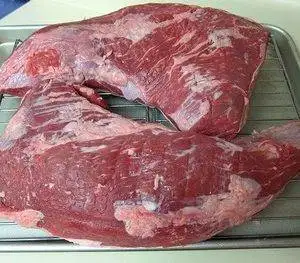
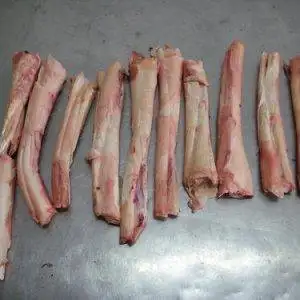
Reviews
There are no reviews yet.